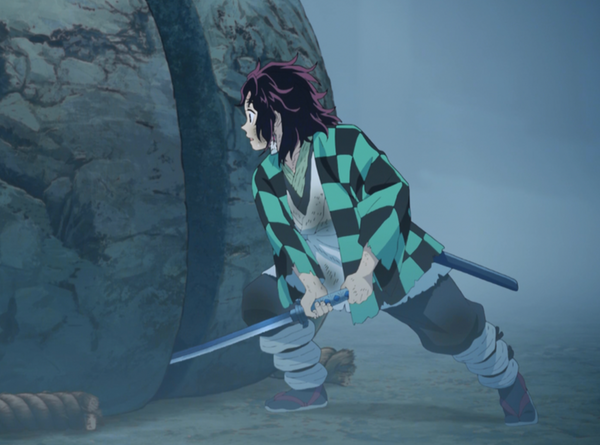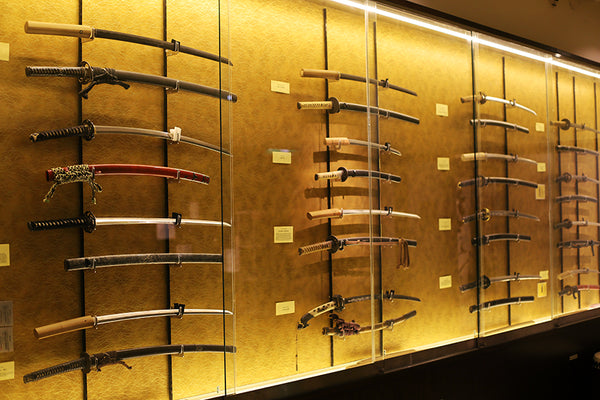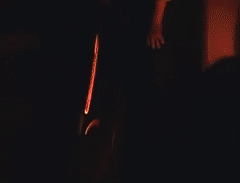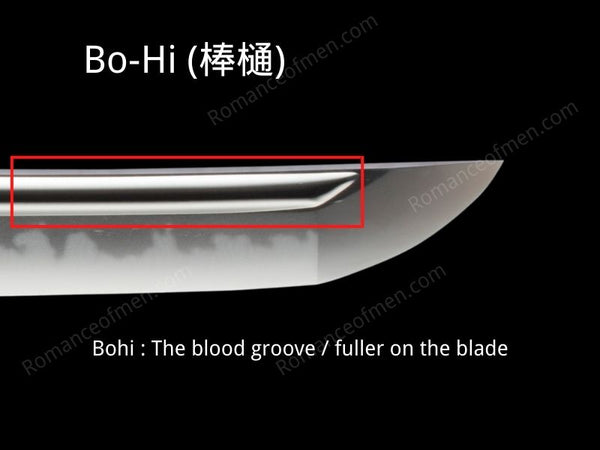Common Myths and Facts About Japanese Katanas
The Katana, or samurai sword, is widely recognized as one of the world's most iconic blades. The Katana is a traditional Japanese sword famous for its curved blade and fine craftsmanship. You will see them in numerous films and TV productions, often exaggerating their historical accuracy. So how much do you know about Katanas that is true?
In modern times, people primarily use katana for ceremonial purposes and in some martial arts events. However, people still hold them in great regard as the weapons of a master. If you're curious about Japanese art and culture, you probably want to know more about Katana, the most critical part of the samurai culture. It is a well-known sword; therefore, let's examine some interesting facts below. These trivial facts will undoubtedly increase your understanding, from the unusual manufacturing procedure to the facts demonstrating the potency of Kanata.
Table of Content
- Myth: Katana Can Cut Thought Rocks, Steel Etc.
- Myth: Ninjato is the Weapon of a Ninja
- Myth: All Katana Should be worn Edge Upward
- Common Question: What Are the Lengths of a Katana, Wakizashi, and Tanto?
- Common Question: Why and How Does a Katana Get Its Curve?
- Common Question: How Long Does it Take to Make a Katana Sword?
- Myth: The Harder a Katana, the Better!
- Myth: Bohi is Used to Drain Blood
- Myth: Tamahagane is the Best Material for a Katana!
- Myth: Katana is the primary weapon for samurai
- Common Question: Are katanas bad swords?
- Common Question: Are katanas better than European swords?
- Common Question: Are katanas brittle?
- Common Question: Are katanas double edged?
- Common Question: Are katanas one handed?
- Common Question: Are katanas full tang
- Common Question: Are katanas still made in Japan?
- Common Question: Are katanas still used today?
- Common Question: Are katanas legal?
- Common Question: Did ninjas use katanas?
- Common Question: How many times is steel folded to make a katana?
- Common Question: Can a dull katana cut you?
- Common Question: Did Chinese use katanas?
- Common Question: Do Japanese officers still carry katanas?
- Common Question: How can you tell if a katana is real?
Common Myths, Facts and Questions About Japanese Katanas!
It's no exaggeration to say that samurai swords have a remarkable impact on Japanese culture and popular culture. These days, when we think about samurai, we see unstoppable warriors who can swing a sword without trouble, cut through their enemy, and catch and twirl their blades with their bare hands.
But how accurate are the things we see in movies? Here are some exciting myths and facts regarding the legendary samurai blades:
Myth: Katana Can Cut Thought Rocks, Steel Etc.

In the famous anime Demon Slayer, Tanjiro cut though a giant rounded rock to be eligible for the Demon Slayer test. But in real life, no one can cut though rock.
Katanas have a high steel carbon content, resulting in incredible sharpness and ability. Thus, they can smoothly cut through softer materials such as cloth, bamboo, and even samurai armor at the hand of skilled samurai!
However, they cannot cut through steel or rocks. Steel is much harder than the type of steel used to make traditional katanas, and rocks are still even harder. A katana is a weapon that primarily cuts flesh. It is not a tool for cutting through hard materials like rocks or steel.
Myth: Ninjato is the Weapon of a Ninja

Popular culture often portrays the ninjatō as the weapon of choice for ninjas. But in reality, the ninjatō was not a specific weapon that ninjas would use. Instead, ninjas used various weapons, including the Shuriken, kusari etc. Depending on their mission and situation.
Much of the popular image of ninjas and their weapons, including the ninjatō, comes from fictional stories and popular culture rather than actual historical accounts. There is limited historical evidence about their weapons and tactics. Historically, a straight-edged sword is called "Chokuto."
Myth: All Katana Should be worn Edge Upward

First of all, we should know the word "Katana" is an umbrella term for all types of Japanese swords, most people will simply call Uchigatana (打刀) a "Katana", but there are other Japanese swords like Tachi太刀, Wakizashi 脇差 and technically speaking they can also be called "Katana".
For uchigatana, it is often worn with the edge facing upward in a formal or non-combat setting. The Uchigatana is a more versatile weapon, and its shorter length made it easier to carry and use in confined spaces.
When wearing a Tachi, this Japanese longsword should be worn with edge downward. The design of a Tachi was originally for use on horseback. This design makes it easier for the wielder to unsheathe the sword quickly and use it for cutting.
So technically, not all katana should be worn edge upward.
Common Question: What Are the Lengths of a Katana, Wakizashi, and Tanto?

The three most common type of Japanese swords—Katana, Wakizashi, and Tanto—come in various lengths. But these are some general guidelines:
Katana: A traditional katana is usually about 100 cm ( 40 inches) in overall length, including the hilt. The blade itself is usually around 70 centimetres (28 inches) long.
Wakizashi: The Wakizashi is a short sword typically about 80 centimetres (30 inches) in length, including the hilt. The blade itself is usually around 50 centimetres (20 inches) long.
Tanto: The Tanto is a small, single-edged Japanese knife or dagger whose length can vary. But it is typically about 50 centimetres (22 inches) in length, including the hilt. The blade itself is usually around 33 centimetres (13 inches) long.
However, these are only general guidelines. The actual length of a katana, wakizashi or tanto can vary depending on the manufacturer and individual specifications. Many samurai will order a custom katana that suits their needs.
Common Question: Why and How Does a Katana Get Its Curve?

The Katana gets its curve because of the differential hardening (also called clay tempered process.)
The clay temper process is one of the key factors contributing to a katana's distinctive curve. It is a specialized technique to manufacture Japanese swords, including the Katana. The clay temper process involves applying a layer of clay to the blade in a specific pattern before the artisans heat and quench it in water.
The thicker clay areas will slow the cooling process, resulting in a softer spin. At the same time, the thinner regions of the edge will cool more quickly, resulting in a harder edge. This combination of hard and soft steel creates a robust and durable edge, yet flexible enough to withstand the cutting stresses.
The curve of the blade, known as the "sori," increases the speed and power of a cut. It also helps to transfer energy from the wielder to the target efficiently. Overall, the curve makes it easier to quickly draw and change direction in the middle of a cut. Thus, you can quickly shift from a defensive to an aggressive stance or switch from one target to another!
Common Question: How Long Does it Take to Make a Katana Sword?
Fact: Generally, making a katana sword is a time-consuming process that can take anywhere from several weeks to several months or even years.
The process of making a katana involves several steps. Each step requires a significant amount of time, skill, and attention to detail. Generally, making a Katana will involve seven steps, and seven expert artisans would perform the entire process typically by hand. These seven craftsmen represented the seven essential skills needed to make a Katana and include:
The Swordsmith: The swordsmiths are only responsible for making the blade.
The Togi-Shi (Sharpener/Polisher): The Togi-shi is skilled artisans who polish the blades that swordsmiths make to make them sharper and look better. After more than ten polishing sessions over two weeks by a Togi-Shi, a beautiful Katana blade is born!
Shirogane-Shi (Habaki Crafter): Shirogane-shi are craftsmen making metal fittings that go above the tsuba handguard, called 鎺 Habaki. They make tiny but significant fittings for a Katana!
Saya-Shi (Sheath Manufacturer): Saya-shi are artisans who make sheaths to hold a Katana.
Tsukamaki-shi (Handle Wrapper): Tsukamaki-shi is a craftsman who wraps ray skin and braided strings around the 柄 Tsuka. The Tsuka is the handle of a Katana.
Nuri-shi (Laquer Painter): Nuri-shi tend to apply lacquer on the outside of the sheaths.
Kinko-Shi/Tsubaki-shi (Metal Fittings/Tsuba Manufacturer): Kinko-shi makes various exterior metal fittings for a Katana, like Kozuka, Menuki, Kougai, and Fuchigashira. Tsubako-shi is skilled artisans constructing tsuba handguards, but Kinko-shi often make them.
Myth: The Harder a Katana, the Better!
Fact: The harder a Katana, the brittler it is; thus, the sword will break easily!
The hardness of a katana is a balance between toughness and sharpness. A harder blade is more likely to hold a sharp edge. But it is also more brittle and likely to break or chip under stress or impact.
Myth: Bohi is Used to Drain Blood

Fact: Traditionally, the primary function of the Bohi isn't draining blood! Is to reduce the overall weight.
Bohi is a Japanese term that refers to a groove or channel carved into a katana's blade. The purpose of the Bohi is to reduce the weight of the blade. Thus, it helps to make a Katana easier to handle and wield, balance the blade, and improve its overall performance.
In some cases, the Bohi may also improve the Katana's cutting performance by reducing the blade's air resistance and drag as it passes through the air. Some legends and myths suggest that it channels the blood away from the point of impact. Thus, it made the blade easier to clean and maintain. Even so, this is not the primary function of the Bohi!
Myth: Tamahagane is the Best Material for a Katana!

Fact: This myth may be true in ancient Japan when modern steel was not available. However, nowadays, in terms of actual cutting performance, modern steel is a much better choice than Tamahagane.
Even though modern steel is stronger and more practical for most uses, tamahagane has a unique beauty and carries a lot of cultural and historical importance. It's made using old techniques, which gives it special patterns and makes each piece unique. People value it not just as a tool, but as a work of art and a link to Japan's samurai history.
However, modern steels have more advantages in actual cutting performance. For one, they are often easier to obtain and are more widely available than Tamahagane. Additionally, the production of modern steels has much higher precision and consistency. They often have higher levels of strength and toughness than traditional steel too!
Whether your blade calls for Tamahagane or contemporary steel is a matter of your preference. It also depends on the skill and preference of the blacksmith.
Myth: Katana is the primary weapon for samurai
Contrary to common belief, the katana was not always the primary weapon of the samurai. In the early stages of Japanese warfare, the main weapons utilized were the yumi, the yari, the naginata, and the nagamaki etc, Short swords like uchigatana and the tachi were primarily used for close combat situations only.
However, the military tactics underwent a significant transformation during the Sengoku period in the 15th century. The warfare strategy shifted towards group battles involving large numbers of foot soldiers, known as ashigaru. This change in battle dynamics led to the katana gaining prominence on the battlefield. The katana’s design, which made it easy to carry, and its suitability for combat situations where quick response times were crucial for victory, made it an increasingly preferred weapon.
As Japan moved into the relatively peaceful Edo period, the importance of the katana as a weapon continued to grow. By the end of the Edo period, the katana had become a significant weapon, often used by shishi, the political activists of the time, in their numerous battles. Thus, while the katana was not always the primary weapon for samurai, it eventually became a symbol of their warrior class and an essential part of their arsenal.
Common Question: Are katanas bad swords?
Katana is not a bad sword at all. In fact, they're known for being good at cutting. The reason some people might say they're bad is because they're often overrated. A lot of people, especially fans of Japanese culture and samurai movies, think of katanas as the best swords ever made. They praise them a lot, saying they can cut through anything, which isn't really true. No sword can do that.
This overrating leads others to react by saying katanas are bad, as a way of countering the hype. But the truth is, katanas were made really well for their time and purpose. Samurai used them effectively in battle. They're sharp, well-balanced, and have a beautiful design. They're not magical or super swords, but they're definitely not bad either.
Like any sword, katanas have their strengths and weaknesses. They were great for the kind of fighting and armor in Japan during the times samurais were around. So, it's more about understanding what katanas are good at and what they're not, rather than labeling them as good or bad swords.
Common Question: Are katanas better than European swords?
Katanas are highly effective for slicing due to their curved, single-edged blade, ideal for quick-draw and fast cutting techniques. They are less effective for thrusting and require careful maintenance. Their sharpness is exceptional, but they can be prone to breaking if used to block heavy blows.
European swords, with a variety including broadswords and rapiers, were designed for both slashing and thrusting, making them versatile in different combat scenarios. They often had double-edged blades and were generally heavier, allowing for a mix of slashing, thrusting, and bludgeoning. This versatility made them suitable against various armor types but sometimes meant less specialization in specific techniques like the precise cutting of katanas.
In summary, katanas excel in cutting and speed, while European swords offer more versatility and adaptability. The choice between them depends on the combat style and situation.
Common Question: Are katanas brittle?
Katanas are not excessively brittle, thanks to the traditional clay tempering process used. This process creates a blade with a hard, sharp edge for cutting, while maintaining a softer, more flexible spine. This combination reduces the likelihood of the sword shattering or breaking.
Katanas are not primarily intended for blocking heavy blows, and heavy impact on the edge can lead to damage. The sword's design is tailored more for slicing and swift cutting actions rather than enduring heavy, direct clashes with armor or other swords.
Common Question: Are katanas double edged?
No, katanas are not typically double-edged. They are designed with a single-edged blade, a defining characteristic. However, there is a specific katana style called Moroha Zukuri (諸刃造), where the front part of the blade is double-edged. This style is less common, featuring a unique design with a second edge over part of its length, differentiating it from the standard single-edged katana.
Common Question: Are katanas one handed?
Katanas are traditionally not intended for one-handed use. They are designed with a longer handle that accommodates two hands, providing better control, balance, and power in strokes. This two-handed grip is central to the traditional techniques and fighting style associated with the katana.
There are smaller Japanese swords like the wakizashi, which are more suitable for one-handed use. In some specific and rare sword styles or situations, a katana might be used with one hand, but these are exceptions and not reflective of the standard use for which the katana was designed. The norm for katana use is a two-handed grip, aligning with the sword's design and the martial arts techniques developed for it.
Common Question: Are katanas full tang
Yes, real katanas are full tang. The tang is called Nakago, which is the extension of the blade that goes into the handle, is not only integral to the structure of the katana but also carries significant importance beyond just functionality. In the world of Japanese swordsmithing, the tang is often inscribed with the swordsmith's signature, known in Japanese as 銘 (Mei). This signature is a crucial aspect of a katana's identity and authenticity.
Additionally, the tang may bear other inscriptions, such as 截断銘 (Saidanmei), which are records of tameshigiri (test cutting) that indicate the sword's performance in cutting tests. These inscriptions can include various details about the sword's history, creation, and testing. The presence and content of these markings are not just a matter of tradition; they provide vital information about the sword, making the tang of a katana more significant than in many other types of swords.
Common Question: Are katanas still made in Japan?
Yes, katanas are still made in Japan. Despite a decrease in the number of people who collect them, with most collectors being older, the tradition of katana-making continues. In Japan, this craft is preserved through a rigorous system of certification for swordsmiths. Aspiring smiths must undergo extensive training and pass stringent examinations to become licensed. Furthermore, the production of katanas is regulated by the government, including limitations on how many swords a smith can produce each year. This ensures the maintenance of quality and adherence to traditional techniques. The ongoing production of katanas in Japan is a testament to the enduring legacy and cultural significance of these swords.
Common Question: Are katanas still used today?
Yes, katanas are still used today, primarily in the realm of martial arts and cultural practices. Many martial arts enthusiasts, including practitioners of iaido and kenjutsu, use katanas to learn and demonstrate traditional Japanese swordsmanship. Additionally, katanas hold a special appeal for fans of anime and Japanese culture, often featuring as replica swords for collections or in cosplay. While they are no longer used in actual combat, katanas continue to be revered and utilized in these modern contexts for their cultural and historical significance.
Common Question: Are katanas legal?
The legality of owning a katana varies by country. In nations like the United States, Canada, and Australia, katanas are generally legal to own. However, each country may have specific regulations regarding the purchase, ownership, and carrying of these swords. These regulations can vary from state to state or region to region within the country. It's important for individuals interested in owning a katana to familiarize themselves with the local laws and regulations to ensure compliance. In summary, while katanas are allowed in several countries, it's crucial to be aware of and adhere to the specific legal requirements of your location.
Common Question: Did ninjas use katanas?
Yes, ninjas did use katanas, but these were not their primary weapons. Ninjas were known for their versatility in weaponry and often used tools that were more conducive to stealth and agility. Their main arsenal included weapons like shuriken (throwing stars), kusarigama (chain-sickle), and cross-shaped spikes. They were also skilled in using a variety of other weapons such as bows, firearms (like the arquebus), and even early forms of hand grenades. The katana was part of their armament but was typically used in specific circumstances where its effectiveness was maximized. Their choice of weapon often depended on the mission and the need for concealment or combat versatility.
Common Question: How many times is steel folded to make a katana?
To make a katana, the steel is typically folded at least 15 times. This process, known as "tanren 鍛錬" in Japanese, involves repeatedly folding and hammering the steel. The primary purposes of this folding are to remove impurities and to even out the carbon content within the steel. The steel is extended into a rectangle, then a cut is made in the middle, from which it is folded back on itself. This can be done in a consistent direction (one-way fold) or alternating between vertical and horizontal (cross fold). The choice of folding method depends on the swordsmith's preference.
This folding process is repeated around 15 times, depending on the condition of the steel. The early stages of this process are referred to as "shitatanren" (primary forging), where the carbon content is assessed and adjustments are made if necessary. This intensive forging process is critical in achieving the desired quality and characteristics of a traditional katana.
Common Question: Can a dull katana cut you?
Yes, a dull katana can still cause damage if handled improperly. Even when the blade isn't razor-sharp, the weight and force behind a katana can inflict injury. The edge of a dull katana, while not as effective at slicing as a sharp one, can still cause cuts, particularly with enough speed or force behind a swing. Additionally, improper handling can lead to accidents or unintentional injuries. Therefore, caution and respect for the weapon are essential, regardless of its sharpness.
Common Question: Did Chinese use katanas?
No, the Chinese did not traditionally use katanas. The katana is distinctly Japanese. However, in the later Ming Dynasty, the Chinese encountered the katana through interactions with Wako. (倭寇), Japanese pirates. Impressed by the effectiveness of the katana, the Chinese studied and adapted aspects of its design to improve their own swords. This led to the development of the Miao Dao, a Chinese sword that shares some characteristics with the katana, like a longer blade and a similar usage style. The Miao Dao represents a fusion of Chinese sword-making techniques with certain influences observed from the Japanese katana.
Common Question: Do Japanese officers still carry katanas?
Japanese military officers no longer carry katanas as part of their standard equipment. Historically, during the Meiji era and onwards, Japanese officers, both in the army and navy, were required to carry swords (Gunto 軍刀) as part of their uniform. These swords were often inspired by Western saber designs but eventually incorporated traditional Japanese sword elements. However, with the modernization of warfare and changes in military doctrine, the role of the sword has become largely ceremonial. Today, in contemporary times, including in the Japan Self-Defense Forces, swords are primarily used for ceremonial purposes and are not part of the standard military equipment
Common Question: How can you tell if a katana is real?
To determine if a katana is a genuine Nihonto (traditional Japanese sword), several key elements should be examined. Firstly, check for a certificate of authenticity. This is often provided by reputable dealers or authenticators and indicates the sword's legitimacy.
The hamon (the distinct wavy line along the blade's edge) is another crucial indicator. A real katana's hamon is created during the tempering process and should appear natural and integrated into the steel, not superficially etched or painted.
The tang (the part of the blade that extends into the handle) is also vital. In authentic katanas, the tang will show signs of age (as it's untreated) and often contains inscriptions (like the swordsmith's signature). This part of the sword is crucial for historical and authentication purposes.
If you're assessing whether a katana is functional rather than just a decorative piece, check if it is full tang (meaning the metal extends all the way down the handle), which is essential for structural integrity. Additionally, examine the overall finishing of the sword, including the quality of the ito (handle wrap), which should be tightly and neatly wrapped, and the blade's polish and symmetry. High-quality craftsmanship in these areas often indicates a functional and well-made katana.
Conclusion
The Katana is the most vital part of the Samurai culture The Katana has come to represent not only the samurai warrior but also Japan itself. However, as famous as this Japanese sword is, there are many misunderstandings about them too! So I bring you the most common facts and misconceptions about a Katana to help you know more about them. Thanks for reading!





















